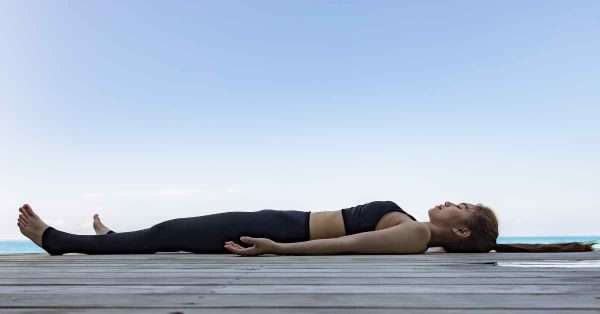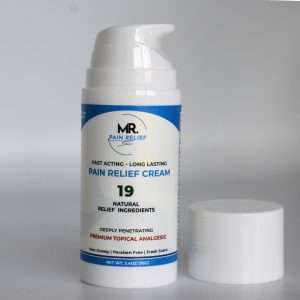Introduction:
In today’s fast-paced world, pain, whether it’s a result of stress, injury, or an underlying medical condition, has become a common complaint. At the same time, medications are often the first line of defense but have potential side effects, leading many to seek alternative or complementary therapies.
One such method that has stood the test of time and scientific scrutiny is progressive muscle relaxation. This article delves deep into this technique, shedding light on its origins, benefits, and how it can be a game-changer in pain management.
Understanding Progressive Muscle Relaxation:

Progressive Muscle relaxation, (PMR), was developed by Dr. Edmund Jacobson in the 1920s. He believed that physical relaxation could lead to mental calmness. The technique revolves around systematically tensing and releasing muscle groups, starting from the feet and toes and working up to the head. This deliberate focus on each muscle group helps individuals identify and release tension, promoting overall relaxation.
The Science Behind Progressive Relaxation and Pain Relief:
- Mind-Body Synergy: Progressive relaxation emphasizes the intricate connection between the mind and body. By honing in on the sensation of tension and its subsequent release in each muscle group, individuals can pinpoint areas of stress and tension in their bodies, leading to more targeted pain relief.
- Tackling Muscle Tension: Chronic tension, if left unchecked, can exacerbate pain, especially in conditions like tension headaches or musculoskeletal pain. Progressive relaxation directly addresses this by helping alleviate muscle tension, thereby reducing pain.
- Combatting Stress and Anxiety: Elevated stress and anxiety levels can intensify pain perception. Progressive relaxation acts as a natural stress reliever, potentially decreasing pain severity.
- Sleep Enhancement: Pain often disrupts sleep patterns. Progressive relaxation can improve sleep quality by promoting overall relaxation, crucial for pain recovery and well-being.
Delving Deeper: Research Insights
- A systematic review of relaxation techniques, including PMR, for pain relief in patients post-abdominal surgery revealed significant pain relief in the relaxation group compared to controls1.
- A study on post-cesarean women evaluated the effectiveness of progressive muscle relaxation techniques for pain management. The results showcased a marked reduction in pain in the group practicing the technique2.
- Research involving children with primary headaches found that progressive muscle relaxation exercises, alongside other mind-body techniques, led to a significant decrease in headache frequency3.
Step-by-Step Guide to Practicing Progressive Relaxation:

- Setting the Stage: Choose a quiet, serene spot free from disturbances. Lie down on a flat surface, ensuring your body is comfortably aligned.
- Breathing Fundamentals: Initiate the process with deep, rhythmic breathing. Take a deep breath through your nose, hold for a moment or two, and exhale slowly through your mouth.
- The Tension-Release Cycle: Begin with your toes. Intentionally tense them, hold the tension briefly, and then gradually release. Progressively move upwards, addressing each muscle group – calves, thighs, abdomen, chest, arms, and face.
- Mindful Practice: The key is to remain present throughout. If your mind drifts, gently steer your focus back to the muscle group you’re addressing.
- Consistency is vital: incorporating progressive relaxation into your daily routine is a great way to reap the full benefits of progressive muscle relaxation.
Potential Applications:
- Post-Surgical Recovery: As seen in the study mentioned above, progressive relaxation can be particularly beneficial post-surgery, aiding pain management and accelerating recovery.
- Chronic Pain Management: For those battling chronic pain, incorporating progressive relaxation can offer a non-pharmacological tool to manage and potentially reduce pain intensity.
- Stress-Induced Pain: Conditions like tension headaches or stress-induced back pain can benefit from the relaxation and tension release that PMR offers.
- Myofascial Pain Syndrome of Upper Trapezius Muscle: PMR, combined with McKenzie neck exercises, has been shown to improve the functional ability of the neck in cases of myofascial pain syndrome of the upper trapezius muscle in college students1.
- Migraine Headache Pain: Spiritual meditation, which includes techniques similar to PMR, has been found to reduce migraine headache medication use, suggesting its potential to alleviate migraine pain2.
- Tetanus-Related Muscle Pain: While not directly related to PMR, high doses of sedatives have been used to manage severe tetanus, which causes pain, stiffness, and spasms of facial muscles and trunk and skeletal muscles3.
- Pain Management in Oncology: Integrative medicine, which includes techniques like PMR, has been explored for its benefits in pain management for oncology patients4.
Precautions
Progressive Muscle Relaxation (PMR) is generally considered safe for most individuals. However, like any therapeutic technique, there are certain precautions to consider:
- Existing Medical Conditions: Individuals with certain medical conditions, such as muscle injuries or severe muscle spasms, should consult a healthcare provider before starting PMR. Since PMR involves tensing and relaxing muscle groups, it could exacerbate certain conditions.
- Mental Health Concerns: While PMR can be beneficial for reducing anxiety and stress, individuals with severe anxiety disorders, PTSD, or other mental health conditions should discuss PMR with a mental health professional before starting PMR. Sometimes, the act of tensing muscles can trigger or exacerbate symptoms.
- Understanding the Technique: Understanding and practicing the technique correctly is essential. Incorrectly practicing PMR, such as tensing the muscles too forcefully, can lead to muscle strain or discomfort.
- Awareness of Body’s Response: Knowing how your body responds during and after PMR is crucial. Suppose you experience pain, discomfort, or any unusual symptoms. In that case, stopping the practice and consulting with a healthcare provider is essential.
- Setting: Ensure you are comfortable and safe when practicing PMR, helping you focus on the technique and avoid distractions or hazards.
- Duration and Frequency: While you can practice PMR daily, it’s essential not to overdo it. Start with short sessions and gradually work up the duration as you become more familiar with the technique.
- Combination with Other Therapies: If you are undergoing other treatments or therapies, especially for pain or mental health concerns, discuss with your healthcare provider about incorporating PMR into your routine.
Conclusion:
Progressive muscle relaxation (PMR) is a powerful tool in holistic health practices, offering a non-invasive approach to alleviating various types of pain and stress. Its versatility extends from enhancing adolescent sleep quality to assisting patients with gynecological malignancies.
As research continues to delve deeper into its potential applications, PMR is emerging as a promising technique for those seeking natural, practical methods for pain relief and overall well-being. Whether you’re a professional navigating the challenges of a pandemic or someone simply looking to improve your mental and physical health, PMR offers a scientifically-backed avenue worth exploring. As always, it’s essential to consult with healthcare professionals before incorporating new practices into your routine.
More Stories
Find more amazing stories on the blog!
Footnotes
- Efficacy of relaxation therapy as an effective nursing intervention for post-operative pain relief in patients undergoing abdominal surgery: A systematic review and meta-analysis ↩
- Effectiveness of Jacobson’s progressive muscle relaxation technique for pain management in post-cesaerean women ↩
- Hypnotherapy or transcendental meditation versus progressive muscle relaxation exercises in the treatment of children with primary headaches: a multi-centre, pragmatic, randomised clinical study ↩
- The Effect Of Combination Of Progressive Muscle Relaxation And Mckenzie Neck Exercise On Functional Ability In The Case Of Myofascial Pain Syndrome Muscle Upper Trapezius On Students ↩
- Effect of Different Meditation Types on Migraine Headache Medication Use ↩
- Titration of high dose sedation is effective in severe tetanus: a case report ↩
- The Benefits of Integrative Medicine for Pain Management in Oncology: A Narrative Review of the Current Evidence ↩





